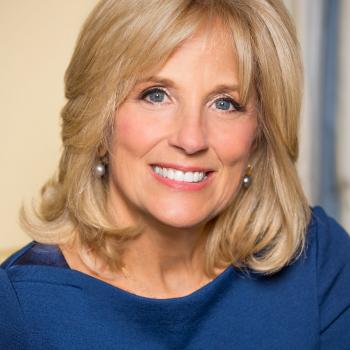Forbes List Exposes Hollywood Wage Gap
Angelina Jolie may be Hollywood’s highest-paid female actor but she trails Leonardo DiCaprio by $47m. What’s going on?
Forbes Magazine released its annual list of the top-earning male Hollywood actors this week. Hollywood star salaries have always been out of whack, and whether you can rate an actor’s talent by how much they earn is debatable, but the one thing you can say is that a male star’s earning power is pretty consistent. Year after year the same guys – Johnny Depp, Will Smith, Leonardo DiCaprio – appear near the top of a list that celebrates their ability to earn.
This year Leo is the king of the world. He had a very successful 2010 (Forbes’s survey covered May 2010-May 2011), with Shutter Island and Inception cumulatively taking more than $1.2bn at the box office and earning DiCaprio $77m. Depp ($50m) and Smith ($36m) didn’t do badly either. Even Hollywood veteran Tom Hanks, whose last film Larry Crowne underperformed at the box office, earned a decent wageHanks’s earnings look puny compared with DiCaprio’s, but his $35m is still $5m more than the earnings of Angelina Jolie and Sarah Jessica Parker, who were tied at the top of last month’s womens’ list. In fact, Hollywood’s female top-earners always lag behind the men. And when they do reach figures similar to those of the highest flyers (Sandra Bullock earned $56m for her roles in The Proposal and The Blind Side last year), they don’t tend to earn them for long (Bullock’s earnings dropped to $15m this year)
So apparently not only are actors paid an obscene amount of money, but there is actually a significant difference between what top male actors and top female actors are paid. Whenever I hear about wage gaps like this, I always want to know the cause. Is it blatant or hidden sexism, or perhaps something related to the different choices women face? Let’s take a look.
Men tend to star in big-budget movies that earn at the box office. Women can’t compete at the same level because they aren’t given the same roles. They’re not the stars of a Pirates of the Caribbean or Inception, they’re the window dressing: girlfriends and sidekicks. And as the foreign market for Hollywood films continues to grow (foreign revenue made up more than 67% of the US’s total box office gross in 2010), women will be increasingly shut out of the higher-earning roles. The foreign market is familiar with men blowing things up and wants to see more of it.
See what I mean? Here we get to the reason. It’s not that women are paid different from men for the same work, it’s that because of sexism women are given different work, and that pays less. It irks me that even in 2011 women are still so often treated as “window dressing” in movies. Sure, there are movies with female leads, but how many are there really when compared to those with male leads? In many ways, patriarchal gender norms still permeate society, even the movie industry.
In Hollywood, women earn less as they age. Harrison Ford still bags $20m for action roles. If Cowboys & Aliens performs anything like his previous films, we’ll see him back on the Forbes list next year. But (as Indiewire’s Women and Hollywood blog noted) there are no 69-year-old women earning $20m per film. Sigourney Weaver (63) would probably love to have another crack at an Alien film but, as she said recently, that’s not likely to happen: “Just because of the way the industry is.” Female actors are therefore under a greater imperative to build their brands beyond the screen, because that’s where their future earning potential lies. Parker still makes money as a producer of Sex and the City. She’s also branched out into fashion and perfume. Jennifer Aniston is a huge brand outside of her film work.
Another “ah ha” moment here. Women’s potential and worth in the movie industry decreases as they age, but the same is not true for me. Why? Because women are valued in large part for their sex appeal. As they age and that decreases, their worth in the movie industry drops. This does not happen to men because men can still be manly studs at fifty, sixty, or, apparently, even seventy. Again, here we have sexism rooted so deeply in our societal consciousness that it is hard to uproot it.
Jolie is the one woman bucking the trend. She appears in action movies, so gets paid like the guys. They might have switched the gender of Jolie’s Salt, but the wage stayed male. And that should give hope to the stars of the new female-friendly franchises that are following her. Kristen Stewart (the Twilight series), Rooney Mara (Girl With the Dragon Tattoo) and Jennifer Lawrence (The Hunger Games) are all tied to action franchises that should make big bucks at the box office and will hopefully push their wages up. It’s doubtful they’ll ever earn Leo’s money, but it may at least squeeze the gap.
At least it ends with a positive note! I truly hope that in the future we see more movies with female leads and role models. Hopefully movies like Transformers, with their active male leads and sexy but dumb female sidekicks, will die out. I want my daughter to have good role models, and I realize that what she will see in movies as she grows up will affect her and influence her, even unconsciously. For all of today’s little girls, I desperately hope that the film industry will step up and represent true gender equality.
In some sense, though, Hollywood simply follows the money. They try to produce films that people will pay to see, rather than films no one will want to see. Apparently Hollywood has been betting that people would prefer to watch movies with male leads and females who serve as “window dressing.” So far that bet seems to be paying dividends. Hopefully, as gender equality becomes more and more and more the norm, especially with the growing number of young people who do not remember a world in which gender equality was not held up as the ideal, Hollywood will follow and produce better films. I only wish they would be proactive about this rather than reactive.
The last thing this article really hits on is how hard it is to beat the pay gap between men and women. Today the pay gap persists, but unlike the past it is largely based on factors other than paying men more than women for identical work. Instead, men are more likely to be promoted, more likely to go into jobs that pay more, more likely to work extra hours because they have less family responsibilities, and apparently, more likely to play the lead in action films. These sorts of factors perpetuate the pay gap and make it very difficult to completely defeat. Perhaps my daughter’s generation will be the one to finally beat it for good, or maybe her daughter’s generation. I can only hope.














